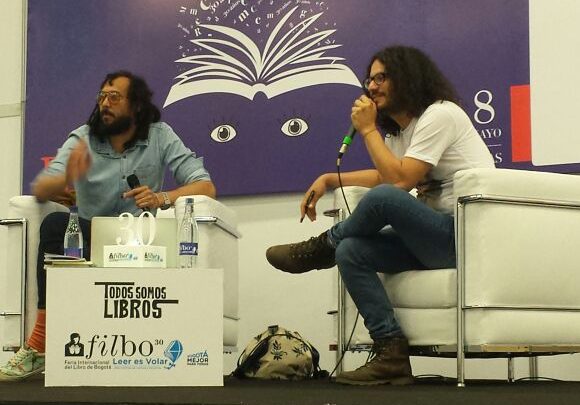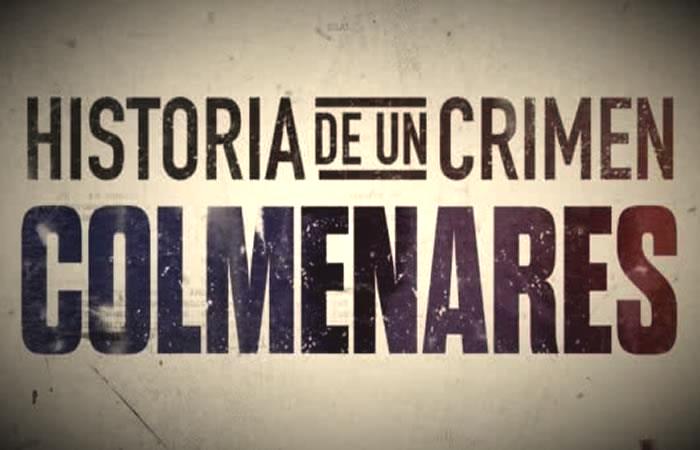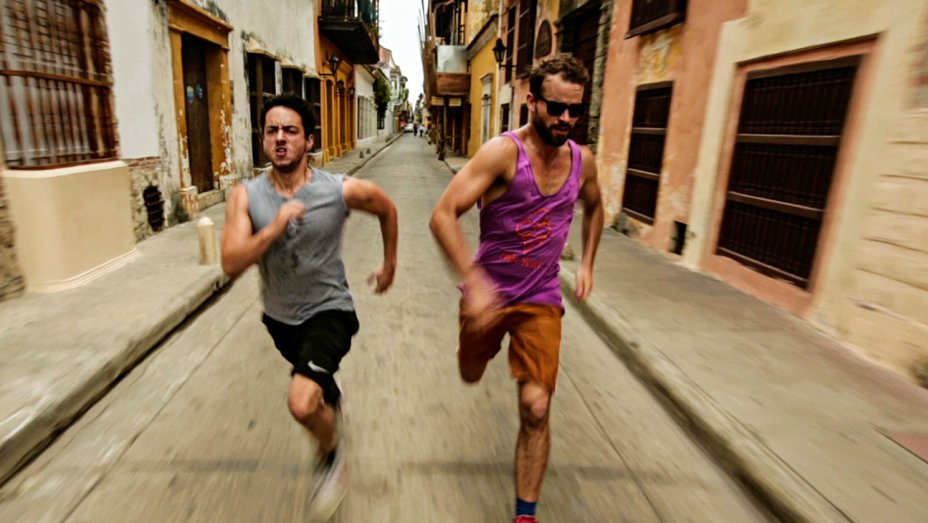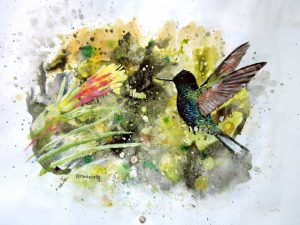
Image courtesy of Miles McMullan
Following the recent publication of the third edition of the Field Guide to the Birds of Colombia, artist Miles McMullan spoke to The Bogotá Post about how he sets about completing such a mammoth task.
There’s a scene in the British TV historico-comedy series Blackadder where the dim-witted Baldrick makes the famed Dr Samuel Johnson realise that he has just completed the world’s most influential dictionary but left out the word ‘sausage’. The scene elucidates a problem that any writer has that sets out to complete a massive tome like a dictionary: the problem of completeness.
Miles McMullan faced this problem when he started on his own dictionary, The Field Guide to the Birds of Colombia, where he illustrates in watercolours every bird species in Colombia that has ever been observed. Fortunately, he has had practice as this is the third edition of the book and he has also published a similar book on the birds of Ecuador.
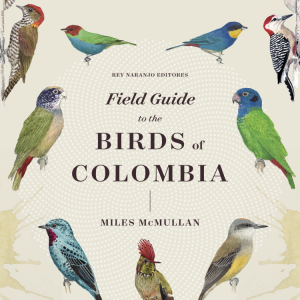
The Field Guide to the Birds of Colombia available now on Rey Naranjo Editores.
Often working from memory of the birds he has seen McMullan painstakingly illustrates each bird in vivid detail in cataloguing the world’s most bird-biodiverse nation. “Photography is a good reference point to work from but illustrations are much much better.” McMullan told us in his main reasons for why illustrations work much better in a field guide. “A photograph has to be much bigger in order to get the same detail as in a painting. It’s important to get the birds pose at perpendicular angles.”
“You also have the problems of light and the different colours.” McMullan added, highlighting the problem of chiaroscuro where the bottom of the bird is much darker than in an illustration so you can’t really see the coloration.
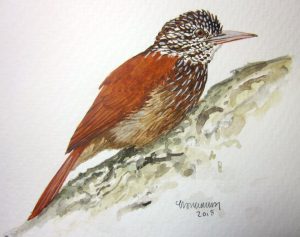
Image courtesy of Miles McMullan
In order to complete the book, McMullan had his schedule down to a fine art whereby he had specific goals in the mammoth task of cataloguing Colombia’s avian biodiversity. “I do time and motion studies constantly. How many brush strokes, how many minutes I take and studies on how long it takes me to work all the time,” he said of his meticulous rigour.
How long does it take for him to get through an illustration? “It’s a lot faster than you would think. The editors tell me I shouldn’t ever tell anybody.” he answers, laughing. Some birds, however, are tricky enough to challenge this pace. As he paints with watercolours, usually it’s the darker, smaller birds that have delicate light spots, like woodcreepers, that challenge McMullan’s hectic pace. On the other hand, white birds like doves and egrets are easier to get through.
Flipping through the Field Guide, you get a sense of the sheer scale of McMullan’s project and the importance of a dedicated schedule. Reading the book is a pastime that will swallow hours if not days of your life. If it’s on your coffee table you run the risk of ruining conversation with your friends as they’ll probably choose to be mesmerised by the sheer scale of Colombia’s bird species. You will squint as you try and spot the differences between the overwhelming number of hummingbird species there are. You will learn that the largest group of birds in the country are the tyrant-flycatchers. And the more filthy-minded will skim through to find the dirtiest-sounding bird names (Answer: Peruvian Booby, Tawny-Throated Leaftosser and the Agile Tit-Tyrant).
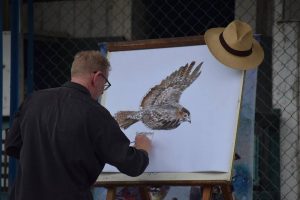
The artist at work in his studio.
Miles McMullan first arrived in Ecuador from his native Ireland when he was 19 in 1986 having trained as a portraitist. He lived in Venezuela for seven years before moving to Colombia, where he has lived for 11 years. Curiously, for a man who has spent so much time drawing birds, he never really sets out with the objective of birdwatching himself but he does like to get out in nature. Diagnosed with skin cancer in 2013, the artist can’t spend as much time out in the sun as he used to. Though, against doctor’s orders, he does get a chance to sneak in a weekend in Villavicencio and the district of Nariño, on the border with Ecuador, where he also has a home.
McMullan was also a part of Global Big Day, where the world’s birders try and spot as many bird species on a given day, and he birded with a group in Meta. As it so happened, his observation of the Slate-coloured Grosbeak (p340 of the Field Guide among the Tanagers) was cruelly disqualified by the birding authorities. Meta would have been in third place if they had accepted McMullan’s submission. “I wasn’t going to argue with them,” he told us, wistfully. McMullan can take consolation from the fact Colombia was the eventual winner of Global Big Day and that his petite-sized field guide may be used for future generations to spot and distinguish various species in this remarkably biodiverse land.
The Field Guide to the Birds of Colombia is now available from Rey Naranjo Editores.
Update: The author noted that the first print run of this edition contains multiple errors–particularly relating to the maps where the birds are to be found within Colombia–that experts will be able to spot. In speaking with his publishers Rey Naranjo they have decided that the next print run will include an erratum with the list of errors at the back of the book. The errors will be made public online as well. There are also plans for the book to be to released in Spanish so many Colombians too can enjoy the book.



